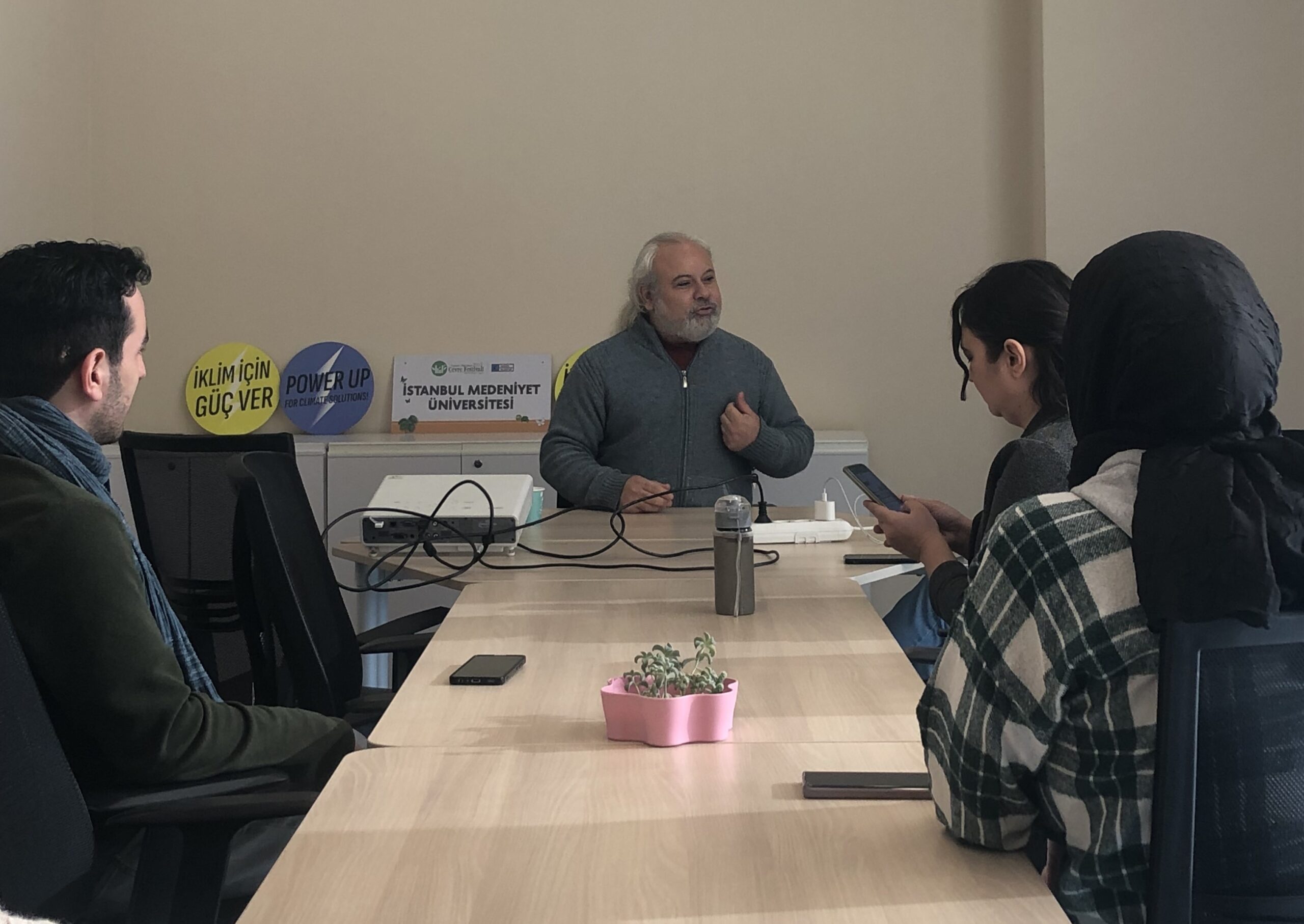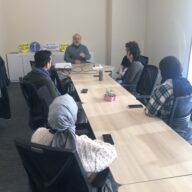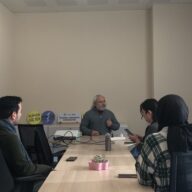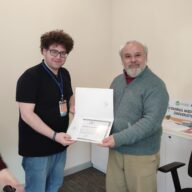Within the scope of the “3rd Istanbul Medeniyet University Sustainability Week” activities, an event titled “Istanbul’s Renowned -Istanbul’s Food” was organized on December 18, 2023 in cooperation with the Sustainability Office and IMU Sustainability Student Club. The event, led by Ercüment YILDIRIM, was open to the participation of all Istanbul Medeniyet University students, staff and the public and took place at the IMU Sustainability Office. In the event, participants were informed about the agricultural geography of Istanbul and the food products identified with this geography.
Starting his speech by emphasizing the rapid urbanization and intense population mobility in Istanbul, YILDIRIM pointed out that until 40-50 years ago, all food needs in the city could generally be met from the immediate vicinity of the city within a radius of 150 km. He stated that the concept of a city that is sufficient in terms of producing its own food, which is one of the basic principles of the slow food approach, has now largely disappeared as a result of Istanbul’s increasing population density, improved transportation facilities and commercial concerns. While the products of local food producers used to be consumed in the past, nowadays, transporting the city’s food from other regions creates negative effects in terms of climate change by increasing carbon emissions from transportation and increases food waste due to transportation and storing. YILDIRIM stated that this shift away from sustainable production and consumption also threatens food security.
YILDIRIM explained that the greenhouses around Pendik Kurtköy, which have been one of Istanbul’s food warehouses since the Ottoman period, still produce a significant amount of agricultural production today, and that prickly cucumbers are mostly grown in this region, and some of the production is even exported abroad. However, with the opening of the area to housing development, the city has lost this important food production area to a great extent, and in this context, the production of Çengelköy cucumber, one of Istanbul’s endemic species, has also decreased. YILDIRIM stated that today, only the small orchard in Kuzguncuk and the forested area behind the Kuleli Military High School are cultivated in this region. YILDIRIM noted that this area, which was a stone mine quarry in the 1940s, has been greened and opened to agricultural production by the people who served the military high school since then, and that this is a good example of land reclamation and community-based conservation. Today, the families of these people are farming on their small plots of land and selling their surplus products to meet the needs of their neighborhood and using sustainable agricultural practices such as water conservation with drip irrigation and rainwater harvesting.
YILDIRIM noted that in Kanlıca, famous for its yogurt, there used to be dairies and dairy farms, and that the people of this area have made their production sustainable by focusing only on yogurt production and have become a brand with Kanlıca yoğurdu. He stated that in the nearby Beykoz Zerzevatçı Village, agricultural production continues with relative sustainability. He mentioned Şile and Şile cloth as the last example on the Anatolian side and said that only a few nostalgic businesses remain in Istanbul today with the decline in flax agriculture.
Looking at the European side, YILDIRIM stated that honey used to be produced in the region called Beekeepers in Kağıthane, there were dairies in Sütlüce, and the area around the Kağıthane stream was famous for animal husbandry and was one of the leading milk sources of Istanbul, and that milk and dairy products were also produced in Sağmalcılar, but they were lost because they could not become a brand.
YILDIRIM stated that when the Kağıthane stream dried up, with the loss of the wetlands around it, we lost the Alibeyköy corn, which used to be famous, and that the Bayrampaşa artichoke, which has passed into the literature, was similarly lost. He noted that sustainable water buffalo breeding is about to disappear with the depletion of water resources in Çatalca.
Looking at the immediate surroundings of Istanbul, YILDIRIM stated that in Bursa, which is famous for its figs, due to the wrong pesticide spraying made in the recent period, the fig flies in the Bursa plain have come to the point of extinction, so we are about to lose fig trees, and that in the city, which was a pioneer in silk textile in the past, the sector is about to end as there are no mulberry trees left as a result of land destruction.
YILDIRIM also noted that in the immediate vicinity of Istanbul, the Hereke carpet was able to survive by becoming a brand, but since the wool of the Ankara goat could not be turned into a brand, these goats are now raised in South Africa and Angora sweaters are produced from their wool, and that industrial hemp used to be produced in Kastamonu Taşköprü, while cotton came from Çanakkale and Gelibolu.
Lastly, YILDIRIM mentioned the food communities in France, which feed around 3 million people, as an example of good practice in terms of food security, and emphasized that in this system, where 40-50 families come together and make annual food consumption plans and communicate directly with producers, it is easier to make legal arrangements for the needs of farmers. He underlined that in our country, where some cooperative initiatives in Istanbul have closed down due to lack of sufficient support, we need to be producers who derive producers instead of consumers, that in this way we will have an impact on the price and that we can support sustainability by providing our food from derivation cooperatives.




